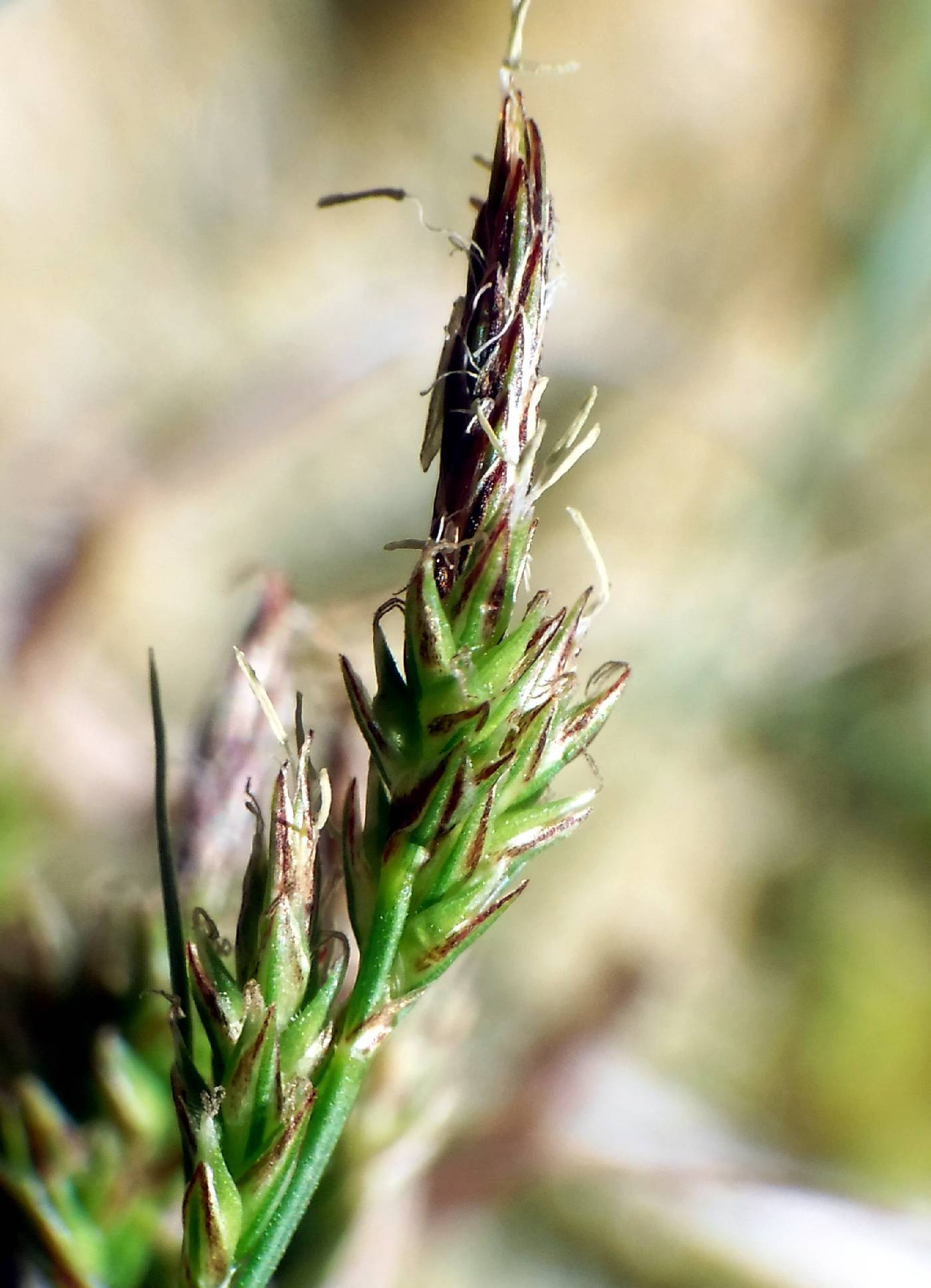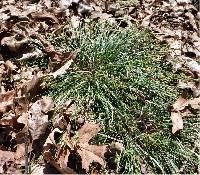|
|
|
|
Family: Cyperaceae
whitetinge sedge
|
Plants densely to loosely cespitose; rhizomes ascending or horizontally spreading, reddish brown to dark reddish purple, 0-70 mm, slender. Culms 10-45 cm, smooth to scabrous distally; bases (remnants of old leaves) slightly or not at all fibrous. Leaf blades pale to bright green, shorter to longer than culms, 0.8-2.5 mm wide, herbaceous, smooth to scabrous abaxially, papillose to scabrous adaxially. Inflorescences with both staminate and pistillate spikes; peduncles of staminate spikes 0.4-9.9 mm; proximal nonbasal bracts leaflike, shorter than inflorescences. Spikes: proximal pistillate spikes 1-4 (basal spikes 0); cauline spikes overlapping, proximal 2 spikes usually separated by less than 7 mm, with 4-14 perigynia; staminate spikes 5-14 × 0.5-1.8 mm. Scales: pistillate scales pale to dark reddish brown, with narrow white margins, lanceolate to ovate or obovate, 2.2-3.4 × 0.4-1.8 mm, equaling or exceeding perigynia, apex usually acuminate, sometimes acute or mucronate; staminate scales lanceolate to ovate, 2.8-6 × 0.6-1.9 mm, apex acute to acuminate. Anthers 1.5-2.7 mm. Perigynia pale green, veinless, ellipsoid, 2.3-3.3 × 0.8-1.2 mm, longer than wide; beak straight, pale green, 0.6-1.1 mm, weakly ciliate-serrulate, apical teeth 0.1-0.4 mm. Stigmas 3. Achenes brown, ellipsoid, acutely trigonous in cross section, 1.2-1.7 × 0.7-1.3 mm. Densely cespitose; lvs 0.5-2.5 mm wide; terminal spike staminate, 4-14 mm; pistillate spikes (1)2-3(4), sessile, 2-7 mm, ±closely aggregated and overlapping; lowest bract usually shorter than the infl; pistillate scales green, or with a purple strip on each side of the broad green center, ovate or lance-ovate, acuminate or cuspidate, to as long as the perigynia, but distinctly narrower above; perigynia 4-12, dull green or yellowish-green, puberulent, 2-3.5 mm, slightly flattened, narrowly obovoid above a stipe-like base, 2-keeled, abruptly contracted into a slender beak 0.5-1 mm; achene rounded-trigonous; 2n=40. N.S. to Fla., w. to s. Ont., Mich., Wis., Nebr., and Okla. Two vars. with us. Gleason, Henry A. & Cronquist, Arthur J. 1991. Manual of vascular plants of northeastern United States and adjacent Canada. lxxv + 910 pp. ©The New York Botanical Garden. All rights reserved. Used by permission. |



